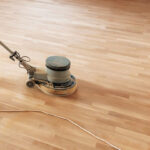
From musty basements to leaky roofs, excess moisture can wreak havoc on any structure, leading to mold growth, structural damage, and costly repairs. However, with the right waterproofing strategies, it’s possible to transform damp spaces into dry, comfortable environments. In this blog post, we’ll explore effective waterproofing strategies and techniques to help you master the art of keeping water out and maintaining a dry, healthy living or working space.
Understanding the Problem: Before delving into waterproofing solutions, it’s essential to understand the root causes of moisture intrusion. Common sources of water infiltration include leaky roofs, cracked foundations, poorly sealed windows and doors, and inadequate drainage systems. Identifying these vulnerabilities is the first step toward developing a comprehensive waterproofing plan.
Strategies for Waterproofing Success:
Roof Waterproofing: The roof is your building’s first line of defense against the elements, making proper roof waterproofing essential. This can involve installing durable roofing materials such as asphalt shingles, metal roofing, or rubber membranes. Regular roof inspections and maintenance, including repairing damaged shingles or flashing, are also crucial for preventing leaks.
Foundation Waterproofing: A strong foundation is vital for a structurally sound building, and waterproofing the foundation is key to preventing moisture from seeping into the structure. Foundation waterproofing methods include applying waterproof coatings, installing drainage systems such as French drains or footing drains, and ensuring proper grading to direct water away from the foundation.
Basement Waterproofing: Basements are particularly susceptible to moisture problems due to their below-grade location. Basement waterproofing techniques may include installing interior or exterior drainage systems, applying waterproof sealants or membranes to walls and floors, and ensuring proper ventilation to prevent condensation buildup.
Exterior Wall Waterproofing: Exterior walls are another potential entry point for water, especially in regions with heavy rainfall or high humidity. Exterior wall waterproofing measures may include installing vapor barriers, applying waterproof coatings or paints, and maintaining proper caulking and sealing around windows, doors, and penetrations.
Interior Waterproofing: In addition to exterior waterproofing measures, interior waterproofing can provide an extra layer of protection against moisture intrusion. This may involve using waterproofing paints or sealants on interior walls and floors, installing sump pumps or dehumidifiers to remove excess moisture, and ensuring proper ventilation to promote airflow and prevent mold growth.
Benefits of Professional Waterproofing: While DIY waterproofing projects can be tempting, hiring a professional waterproofing contractor offers several advantages. Professionals have the expertise, specialized equipment, and access to high-quality materials needed to ensure effective and long-lasting waterproofing solutions. Additionally, professional waterproofing services often come with warranties, providing peace of mind and protection against future water damage.
Conclusion: From roof leaks to basement floods, excess moisture can cause a host of problems for property owners. However, with the right waterproofing strategies in place, you can transform damp, vulnerable spaces into dry, comfortable environments that stand the test of time. By understanding the sources of moisture intrusion and implementing comprehensive waterproofing measures, you can protect your investment and enjoy a healthier, more resilient living or working space for years to come.








